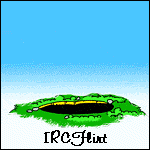













It’s hard to believe that Randall Park Mall, once the largest mall in the world, is no more. A massive monument to shopping that encompassed nearly 2.2 million square feet of space and had reportedly cost $175 million to build, Randall Park Mall was deemed such a colossal miscalculation that it closed after only 33 years in operation and was demolished before it would reach forty years old. Many of the places I’ve photographed are relics of different eras, but few are so close to my own. I grew up with the indoor mall at its peak popularity and spent a significant part of my youth in arcades and book stores, food courts and theaters. In many ways it wasn’t a part of someone else’s past that I was watching fade away at Randall Park Mall, but a part of my own.
Located just outside of Cleveland, Ohio, the village of North Randall was mostly known for its race tracks before the Randall Park Mall was built. Called “The Saratoga of the West”, its primary industries were breeding and training horses. The site that the mall would cover was originally the Randall Park Race Track, located across the street from the Thistledown Race Track. Flamboyant Youngstown developer Edward J. DeBartolo Sr. purchased both in 1960 and moved all racing meets to the Thistledown. At one point he owned nearly 1/10 of all malls in the United States, and by the 1990s he would be a billionnaire.
Some interior demolition had already started by the time I arrived at the mall. On the first floor near where I entered, a pile of debris nearly reached the railing of the second floor, and a lone stuffed bear in a green vest and red bowtie who had been used for holiday decorations stood pointing triumphantly upward at nothing amid a backhoe’s muddy tracks.
Some of the areas of the mall that we visited looked nearly new: the Magic Johnson Theater had opened in 1999, and aside from vandalism in the lobby, looked as though it could reopen any day. Some stores had fared much worse, with holes in the roof and shattered windows. At one point I noted a thin, barely perceptible cloud formation between the first and second floor; at another, a groundhog directly ran toward me through the empty mall, leading me to worry it might be rabid, so I loudly said “Hey buddy!”. It jumped, startled, and took off in the opposite direction. The mall was in a weird limbo. In some ways it always had been.
Early on, Randall Park Mall developed a reputation for being unsafe that would lead to its downfall. Though the first year sales totaled $140 million, the murder of Larry Cook, a 23-year-old Father & Sons Shoes employee, just after Christmas in 1977 was an ominous sign. Cook had been shot in the back of the head with a .38 caliber gun and was robbed of the $800 in cash and $500 in checks he had been carrying from the day’s sales. His body was found two days later when a maintenance man spotted his feet sticking out of a snow drift in a little used section of the mall’s parking lot. In 1979, Julius Kravitz, an executive from a regional food chain, was kidnapped with his wife; while she managed to escape, he was found in a parking lot across from Randall Park Mall and died a day later from his gunshot wounds.
Stories also began to spring up about muggings and gang violence, although these may have been exaggerated. Racial tension in the area was high and the economy in the Cleveland suburbs was plummeting.
Unsupervised teens were also an issue: in 1987 eight teens were arrested when a jewelry store window was smashed and merchandise was stolen, and there was an incident where about 150 teenagers stampeded through the mall, possibly caused by a balloon popping and kids believing it was a gunshot. Gangs roved the mall and fights broke out. People frequently spoke of a race riot happening in this period, which I believe is how the stampede after the balloon incident was interpreted, as I haven’t been able to find anything corroborating the riot story in newspapers.
In 1991 the mall’s Easter Bunny got into a scuffle with one of his helpers and her boyfriend, and a year later a woman sued, claiming that she was attacked by one of Santa’s helpers during an argument over her child’s photograph. In 1992 there was a large altercation outside the mall involving 200 people and fifty police officers when three security guards, two of whom were white, kicked out three Black teens.
The Magic Johnson Theater, now renamed the O Theater, had trouble attracting patrons to the dying mall. Even with half-price movie tickets, their total weekday attendance was 15 or less by 2008 and it closed in 2009. Still in relatively good condition even when I visited years later, the O Theater would be destroyed in 2016 by arson.
The power was shut off in May 2009, and save for the dusty sunbeams streaking through the skylights on sunny afternoons, the mall went dark.
For a while, Randall Park Mall had been something really special. It had been a formative part of the lives of so many residents of the Cleveland area. On my last day there, I noticed how quickly the light inside the mall disappeared when stormclouds gathered overhead. The old saying, “Everything Must Go!”, so often associated with retail sales, seemed an appropriate eulogy for the mall itself.

In its prime, Randall Park Mall’s motto had been “Much More Than Everything”, and it was so integral to North Randall’s identity that the town seal featured two shopping bags. In its abandoned state it was also emblematic of the town’s decline. Industrial Realty Group purchased the mall for $375,000 in 2014, and it was finally torn down between that year and the next. As a final bit of tragic irony, the mall was replaced by an Amazon Fulfillment Center, which operates there currently.


